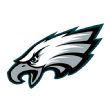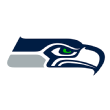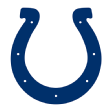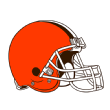In a league in which no franchise has shown any ability to beat the draft, the best way to find young talent is to amass as many picks as possible. Not all picks are created equal, but we can track which teams have the most capital to work with in the 2018 NFL draft.
There are a couple of ways to measure draft capital, and both are useful when analyzing the current league:
-
The most well-known model is the Jimmy Johnson chart, a widely accepted chart credited to the coach who traded for more draft picks than anyone while rebuilding the Dallas Cowboys into a dynasty.
-
Franchises that are more inclined to use analytics have built their own trade chart, adjusted for more empirical measures of actual value returned and for the current collective bargaining agreement, which operates on a different draft scale. The closest public analogue to those models is the chart created by Chase Stuart of Football Perspective.
The Johnson chart is useful for measuring what the league perceives as the value of each pick, which comes in handy for analyzing trades. The Stuart chart is useful for measuring what each pick is actually worth relative to other selections. The traditional chart favors selections at the top of the draft, while the Stuart chart finds that midround picks are far more valuable than the Johnson chart perceives them to be. For the purpose of this piece, we’ll use the Stuart model unless otherwise noted.
If teams weren’t allowed to trade selections and compensatory picks didn’t exist, we would know exactly which had the most and least draft capital from the moment the season ended. Obviously, that’s not the case. We can measure not only which teams have the most draft capital, but also which have added (or lost) the most from what they would have mustered based on their performance alone. Let’s do that here.
To establish the baseline for how much draft capital each team should have, we can start with a 224-pick, compensatory-selection-free draft and assign each team the picks they would have received by virtue of their record, ranging from 67.4 points (Cleveland, 0-16) to 33.3 points (Philadelphia, 13-3). The league handed out a total of 53.2 points worth of compensatory selections, so we’ll assign each team 1/32nd of that figure to add to their total.
The difference between the “expected” draft capital and the amount of actual picks each team is currently projected to spend in the draft is a product of the work done by those organizations. General managers traded players for picks, acquired extra value in pick-for-pick swaps and used free agency to generate compensatory selections. It’s difficult to see that equity on the field before the players appear, so this is a measure of what each general manager has done on paper heading into the end of March.
Let’s start with the five teams that have traded away the most draft capital, then finish with the five that created the most. A full rankings of all 32 teams can be found at the bottom:
Biggest draft capital fallers

Expected capital: 47.6 points (13th)
Actual capital: 37.3 points (21st)
Difference: minus-10.3 points
Washington is down its third-rounder from the Alex Smith trade, and while the team is currently projected to come away with a third-round compensatory pick from Kirk Cousins‘ departure via free agency, that selection and any other comp picks Washington draws from this offseason won’t hit the books until the 2019 draft. Jay Gruden & Co. have no compensatory selections in this year’s draft, and the seventh-rounder they got from the Rams in the Derek Carrier trade doesn’t make up for much.

Expected capital: 55.4 points (6th)
Actual capital: 43.8 points (15th)
Difference: minus-11.6 points
The Jets actually had extra picks thanks to the second-round selection they added in the Sheldon Richardson trade, but then they sent both of their 2018 second-round picks and their 2019 second-rounder to move up the board from sixth to third in their deal with the Colts. The move leaves the Jets with only two picks in the top 100, as Gang Green won’t draft after the third overall slot until 72nd. It’s a lot to give up for what might be their third choice at quarterback.

Expected capital: 35.0 points (32nd)
Actual capital: 22.2 points (32nd)
Difference: minus-12.8 points
Virtually every one of the Eagles’ picks after their first-rounder has changed hands. Their second-round pick went to the Browns in 2016 as part of the deal to draft Carson Wentz. Their third-rounder went to the Bills as part of the Ronald Darby deal last August. They had three late-fourth-round picks after trading away Eric Rowe and Sam Bradford in 2016, but one went to the Dolphins for Jay Ajayi last October. Howie Roseman traded a fifth-rounder he acquired from the Seahawks back to Seattle and reacquired a seventh-rounder he dealt as part of the same swap through an entirely different pair of Seahawks trades.
Of course, the Eagles aren’t complaining with the results. They’ll need to foster cheaper talent over the next several years as their roster continues to get more expensive, but Philly holds all of its own picks in 2019 and projects to get a fourth-round compensatory selection for Trey Burton.

Expected capital: 43.7 points (18th)
Actual capital: 30.7 points (27th)
Difference: minus-13.0 points
It hasn’t exactly been a joyous offseason for the Seahawks, and the fact that they’re missing a huge chunk of their draft capital isn’t going to help matters. They usually have a comp pick or two, but their disastrous free-agent period last year meant that even the sixth-rounder they could have picked up for Stephen Hauschka was wiped away by the signings of Luke Joeckel and Eddie Lacy.
John Schneider is also down his second- and third-round picks after trading for Sheldon Richardson and Duane Brown, respectively. The Seahawks do have four selections in the fifth round, where they once found a cornerback named Richard Sherman, but this is a team that needs starting-level talent on rookie salaries, not roster-fillers.
Things aren’t about to get better, either. The Seahawks will send their 2019 second-round pick to the Texans in the Brown trade. They would have been in line for three fourth-rounders after losing Jimmy Graham, Paul Richardson and Sheldon Richardson in free agency, but the signings of D.J. Fluker, Jaron Brown, Ed Dickson and Barkevious Mingo appear set to cost the Seahawks two of those would-be fourth-rounders and a pair of later selections.

Expected capital: 59.2 points (4th)
Actual capital: 27.6 points (31st)
Difference: minus-31.6 points
The Texans probably couldn’t imagine a world in which they finished with one of the league’s worst records in 2017 when they traded their first- and second-round picks to the Browns as part of the Deshaun Watson and Brock Osweiler deals, but that’s exactly why it’s dangerous to ship off high draft picks in future seasons. They’ll have three third-round selections, with a comp pick and the Seattle third-rounder from the Duane Brown trade coming through, but the Texans will be missing a pair of enormously valuable assets.
Was it worth it to acquire Watson? We’ll see. Again, it’s difficult to imagine the worst-case scenario, but it’s also naive to write it off altogether as an impossibility. Watson looked fantastic during his abbreviated rookie campaign, but what if the ACL injury saps his effectiveness? What if the interceptions that sneaked up at times during that rookie campaign get worse? What if Houston’s inability to field a competent offensive line in front of its young quarterback turns Watson into a frantic mess?
If Watson turns into the player he looked like in 2017, the Texans won’t regret their deal, even if it came at the huge cost of sending the 25th selection in one draft and the fourth overall pick in another to grab Watson. Given what the 12th pick ended up costing, though, anything short of that will go down as a catastrophic mistake by former general manager Rick Smith.
Biggest draft capital risers

Expected capital: 47.2 points (14th)
Actual capital: 52.5 points (6th)
Difference: plus-5.3 points
As was often the case under Ted Thompson, the Packers have extra picks via the compensatory process. Even after the ill-fated decision to sign Martellus Bennett, Green Bay ended up coming away from last spring with a fourth-round pick, a sixth-round selection and two fifth-rounders. Those compensatory picks add up to 7.6 points of draft capital, roughly equivalent to the 69th pick in a typical draft. As a result, new general manager Brian Gutekunst heads into his first draft in charge with 12 picks, which ties him with the Raiders for the most in football.

Expected capital: 56.1 points (5th)
Actual capital: 66.8 points (4th)
Difference: plus-10.7 points
The Broncos added picks in every which way. They picked up a third-round compensatory selection when Denver declined Russell Okung‘s option and let him leave for Los Angeles. They traded a 2017 fifth-round pick to the 49ers to grab a fourth-rounder this year. John Elway shipped off veterans for a pair of fifth-round selections, sending away former key contributor Aqib Talib and failed offensive lineman Ty Sambrailo for picks that will fall two spots apart. Only in the NFL can a star player whom fans were upset to see leave and a guy they might have driven to the airport themselves be worth about the same draft pick.
Those picks might come in handy if the Broncos do want to move up. A couple of extra fifth-rounders won’t get them from fifth to second overall, but let’s say they want to draft someone such as Baker Mayfield and think they can get him in the middle of the first round. To get from No. 40 to No. 18 overall, where the Seahawks are sitting with a hole in their draft, the Broncos might be able to get things done by shipping the 40th pick, their third-round pick (71) and a 2019 third-round pick, which would be a near-perfect match on the Johnson chart.

Expected capital: 60.9 points (3rd)
Actual capital: 74.1 points (2nd)
Difference: plus-13.2 points
The entire difference here amounts to Indy’s trade with the Jets, given that last week’s swap is the only way the Colts have modified the picks they would have inherited by finishing with the league’s third-worst record in 2017. As you might suspect, the Stuart chart suggests the Colts won this trade quite comfortably, as the difference between the third and sixth pick (4.4 points) is far less than the two second-rounders the Jets sent to Indianapolis to pull off the trade (21.4 points). That doesn’t even include the second-round pick New York is sending to the Midwest in 2019.

Expected capital: 41.5 points (21st)
Actual capital: 72.9 points (3rd)
Difference: plus-31.4 points (2nd)
There’s an enormous difference between the Colts and the two teams ahead of them on this list. The Bills added a staggering 31.4 points in draft capital. To put that in context, Stuart’s model values the first overall pick at 31.6 points. GM Brandon Beane has basically manufactured the top selection in a typical draft through trades while managing to hold on to most of his own picks (or using them for better picks in a trade). That’s a dramatic shift for an organization that desperately needs an infusion of draft talent after the Doug Whaley era.
Of course, it came at a cost. If I told you before the 2016 season that the Bills could trade Ronald Darby, Marcell Dareus, Cordy Glenn, Tyrod Taylor, Sammy Watkins and a third-round pick for Kelvin Benjamin, one year of E.J. Gaines and Jordan Matthews and the first overall pick, would that have seemed like an appealing trade? That amounts to much of the core the Bills expected to build around over the next several seasons. And while those players clearly looked very different two years later, things could come crashing down quickly if the general manager doesn’t find a way to draft a franchise quarterback, as Sashi Brown found out in Cleveland.
A year from now, we could very well be criticizing the Bills for passing up the opportunity to draft Patrick Mahomes and failing to beat the Jets to the top of the draft for Josh Rosen. That criticism might not be fair, and like Brown in Cleveland, it’s clear there’s a coherent plan behind what Beane is doing to rebuild the roster in Buffalo. (It helps that he’s also winning games along the way.)

Expected capital: 69.1 points (1st)
Actual capital: 102.3 points (1st)
Difference: plus-33.2 points
Keep in mind that the Browns are punished here for not having any compensatory picks and just dealt away a bunch of their picks for veterans. When GM John Dorsey traded for Jarvis Landry, Damarious Randall and Tyrod Taylor, he shipped off what amounts to 13.3 points of draft capital, which is worth a late-first-round pick. He sent another fifth-round pick to the Patriots as part of the Danny Shelton swap, though that will return a third-round pick in 2019.
This just doesn’t happen very frequently. The last time a team had two top-five picks was in 2000, when Washington benefited from the absolute insanity of the Ricky Williams trade to come away with the second- and third-overall selections. Washington drafted a pair of players who combined to make nine Pro Bowls in Lavar Arrington and Chris Samuels. If the Browns are ever going to turn things around, it’s going to start with what happens at the end of April.
